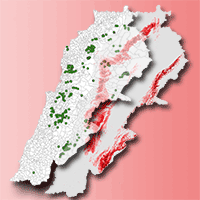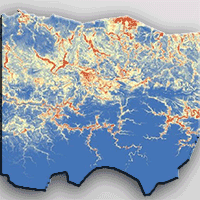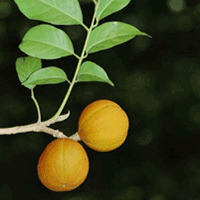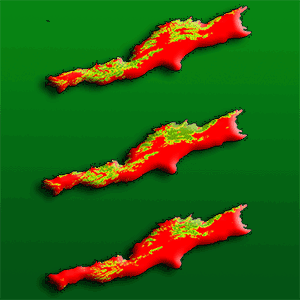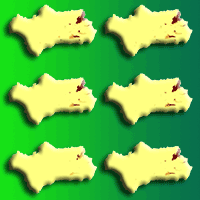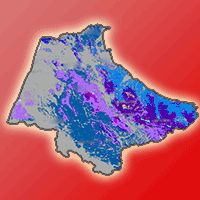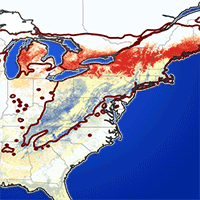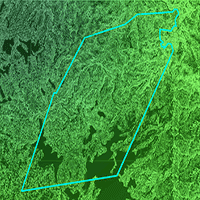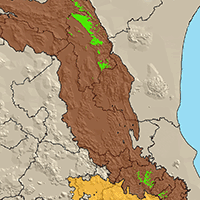
Spatial modeling of the ecological niche of Pinus greggii Engelm. (Pinaceae): a species conservation proposal in Mexico under climatic change scenarios
Aldo Rafael Martínez-Sifuentes (1), José Villanueva-Díaz (1) , Ulises Manzanilla-Quiñones (2), Jorge Luis Becerra-López (3), José Antonio Hernández-Herrera (4), Juan Estrada-Ávalos (1), Adín Helbert Velázquez-Pérez (5)
iForest - Biogeosciences and Forestry, Volume 13, Issue 5, Pages 426-434 (2020)
doi: https://doi.org/10.3832/ifor3491-013
Published: Sep 16, 2020 - Copyright © 2020 SISEF
Research Articles
Abstract
Pinus greggii is a species of socio-economic importance in terms of wood production and environmental services in Mexico, though it is restricted by particular environmental conditions to the Sierra Madre Occidental. Species distribution models are geospatial tools widely used in the identification and delineation of species’ distribution areas and zones susceptible to climate change. The objectives of this study were to: (i) model and quantify the environmentally suitable area for Pinus greggii in Mexico, and possible future distributions under four different scenarios of climate change; (ii) identify the most relevant environmental variables that will possibly drive changes in future distribution; and (iii) to propose adequate zones for the species’ conservation in Mexico. Some 438 records of Pinus greggii from several national and international databases were obtained, and duplicates were discarded to avoid overestimations in the models. Climatic, edaphic, and topographic variables were used and 100 distribution models for current and future scenarios were generated using the Maxent software. The best model had an area under the curve (AUC) of 0.88 and 0.93 for model training and validation, respectively, a partial ROC of 1.94, and a significant Z test (p<0.01). The current estimated suitable area of Pinus greggii in Mexico was 617.706.04 ha. The most relevant environmental variables for current distribution were annual mean temperature, mean temperature of coldest quarter, and slope. For the 2041-2060 models, annual mean temperature, precipitation of coldest quarter, and slope were the most important drivers. The use of climatic models allowed to predict a future decrease in suitable habitat for the species by 2041-2060, ranging from 48.403.85 (7.8% - HadGEM2-ES RCP 8.5 model) to 134.680.17 ha (21.8% - CNRM-CM5 RCP 4.5). Spatial modeling of current and future ecological niche of Pinus greggii also allowed to delineate two zones for in situ conservation and restoration purpose in northeastern (Nuevo Leon) and central (Hidalgo) Mexico.
Keywords
Conservation, Climate Change, MaxEnt, Sierra Madre Oriental, Pinus greggii
Authors’ Info
Authors’ address
José Villanueva-Díaz
Juan Estrada-Ávalos 0000-0001-5345-459X
Instituto Nacional de Investigaciones Forestales, Agrícolas y Pecuarias, Centro Nacional de Investigación Disciplinaria en Relación Agua, Suelo, Planta, Atmósfera, Gómez Palacio, Durango (México)
Facultad de Ciencias Forestales, Universidad Autónoma de Nuevo León, Linares, Nuevo León (México)
Facultad de Ciencias Biológicas, Universidad Juárez del Estado de Durango, Gómez Palacio, Durango (México)
Universidad Autónoma Agraria Antonio Narro, Unidad Saltillo, Saltillo, Coahuila (México)
Facultad de Ciencias Forestales. Colegio de Postgraduados, Montecillos, Texcoco (México)
Corresponding author
Paper Info
Citation
Martínez-Sifuentes AR, Villanueva-Díaz J, Manzanilla-Quiñones U, Becerra-López JL, Hernández-Herrera JA, Estrada-Ávalos J, Velázquez-Pérez AH (2020). Spatial modeling of the ecological niche of Pinus greggii Engelm. (Pinaceae): a species conservation proposal in Mexico under climatic change scenarios. iForest 13: 426-434. - doi: 10.3832/ifor3491-013
Academic Editor
Maurizio Marchi
Paper history
Received: May 04, 2020
Accepted: Jul 08, 2020
First online: Sep 16, 2020
Publication Date: Oct 31, 2020
Publication Time: 2.33 months
Copyright Information
© SISEF - The Italian Society of Silviculture and Forest Ecology 2020
Open Access
This article is distributed under the terms of the Creative Commons Attribution-Non Commercial 4.0 International (https://creativecommons.org/licenses/by-nc/4.0/), which permits unrestricted use, distribution, and reproduction in any medium, provided you give appropriate credit to the original author(s) and the source, provide a link to the Creative Commons license, and indicate if changes were made.
Web Metrics
Breakdown by View Type
Article Usage
Total Article Views: 42049
(from publication date up to now)
Breakdown by View Type
HTML Page Views: 32872
Abstract Page Views: 4354
PDF Downloads: 4145
Citation/Reference Downloads: 5
XML Downloads: 673
Web Metrics
Days since publication: 1939
Overall contacts: 42049
Avg. contacts per week: 151.80
Citation Metrics
Article Citations
Article citations are based on data periodically collected from the Clarivate Web of Science web site
(last update: Mar 2025)
Total number of cites (since 2020): 14
Average cites per year: 2.33
Publication Metrics
by Dimensions ©
Articles citing this article
List of the papers citing this article based on CrossRef Cited-by.
References
Coupled Model Intercomparison Project Phase 5 (CMIP-5). Intergovernmental Panel on Climate Change, University Press, Cambridge, UK - New York, NY, USA, pp. 1535.
Gscholar
Novel methods improve prediction of species distributions from occurrence data. Ecography 29: 129-151.
CrossRef | Gscholar
ArcGIS Desktop, release 10.4. Environmental System Research Institute - ESRI, Redlands, CA, USA.
Gscholar
Actualización de los escenarios de cambio climático para estudios de impacto, vulnerabilidad y adaptación en México y Centroamérica [Updating of climate change scenarios for impact, vulnerability and adaptation studies in Mexico and Central America]. Centro de Ciencias de la Atmosfera, Universidad Nacional Autónoma de México, Instituto Nacional de Ecología y Cambio Climático, Mexico, DF. [in Spanish]
Online | Gscholar
Astrophytum coahuilense (Bonete de Obispo): distribución conocida, catálogo de metadatos geográficos [Astrophytum coahuilense (Bonete de Obispo): known distribution, geographic metadata catalogue]. Comisión Nacional para el Conocimiento y Uso de la Biodiversidad (CONABIO), México. [in Spanish]
Online | Gscholar
Distribución potencial de Pinus cembroides, Pinus nelsonii y Pinus culminicola en el Noreste de México [Potential distribution of Pinus cembroides, Pinus nelsonii and Pinus culminicola in Northeast Mexico]. Ecosistemas y Recursos Agropecuarios 5 (13): 3-13. [in Spanish]
CrossRef | Gscholar
Calakmul como refugio de Swietenia macrophylla King ante el cambio climático [Calakmul as a refuge for Swietenia macrophylla King against climate change]. Botanical Sciences 94 (1): 43-50. [in Spanish]
CrossRef | Gscholar
La vegetación de alta montaña [High mountain vegetation]. In: “Avances en biogeografía” [Advances in biogeography] (Redondo M, Palacios M, López F, Santamaría T, Sánchez D eds). Universidad Complutense de Madrid, Facultad de Geografía e Historia, Madrid, Spain, pp. 165-174. [in Spanish]
Gscholar
Distribución histórica, actual y futura de Cedrela odorata en México [Historical, current and future distribution of Cedrela odorata in Mexico]. Acta Botanica Mexicana 124: 117-134. [in Spanish]
Online | Gscholar
Distribución potencial y características geográficas de poblaciones silvestres de Vanilla planifolia (Orchidaceae) en Oaxaca, México [Potential distribution and geographic characteristics of wild populations of Vanilla planifolia (Orchidaceae) in Oaxaca, Mexico]. Revista de Biología Tropical 64 (1): 235-246. [in Spanish]
CrossRef | Gscholar
Concluding remarks. Cold Spring Harbor Symposia on Quantitative Biology 22: 415-427.
Gscholar
Informe especial del IPCC sobre los impactos del calentamiento global de 1.5 °C con respecto a los niveles preindustriales y las trayectorias correspondientes que deberían seguir las emisiones mundiales de gases de efecto invernadero, en el contexto del reforzamiento de la respuesta mundial a la amenaza del cambio climático, el desarrollo sostenible y los esfuerzos por erradicar la pobreza [IPCC special report on the impacts of global warming of 1.5 ° C relative to pre-industrial levels and corresponding trajectories that global greenhouse gas emissions should follow, in the context of strengthening the global response to the threat climate change, sustainable development and efforts to eradicate poverty]. OMM-PNUMA, IPCC, Geneva, Switzerland, pp. 32.
Online | Gscholar
Distribución actual y futura del bosque subalpino de Pinus hartwegii Lindl en el Eje Neovolcánico Transversal [Current and future distribution of the Pinus hartwegii Lindl subalpine forest in the Transverse Neovolcanic Belt]. Madera y Bosques 25 (2): e2521804.
CrossRef | Gscholar
Similarity of ecological niche of Pinus montezumae and P. pseudostrobus (Pinaceae) in Mexico: implications for the selection of seed production and conservation areas. Acta Botánica Mexicana 126: 1-22.
CrossRef | Gscholar
Modelado de nicho ecológico de las especies del género Abies (Pinaceae) en México: algunas implicaciones taxonómicas y para la conservación [Ecological niche modeling of species of the genus Abies (Pinaceae) in Mexico: some taxonomic and conservation implications]. Botanical Sciences 94 (1): 5-24. [in Spanish]
CrossRef | Gscholar
ENMeval: an R package for conducting spatially independent evaluations and estimating optimal model complexity for Maxent ecological niche models. Methods in Ecology and Evolutions 5: 1198-1205.
CrossRef | Gscholar
Introducción a la biogeografía [Introduction to biogeography] (1st edn). Universidad Nacional Autónoma de México, Estado de México, DF, México, pp. 316.
Gscholar
Almacenamiento de carbono en la biomasa aérea de una plantación joven de Pinus greggii Engelm [Carbon storage in the above-ground biomass of a young Pinus greggii Engelm plantation]. Revista Fitotecnia Mexicana 30 (3): 251-254. [in Spanish]
Online | Gscholar
Modelado de la distribución actual y bajo cambio climático de pinos piñoneros endémicos de México [Modeling the current distribution and under climate change of endemic stone pines in Mexico]. Revista Mexicana de Ciencias Forestales 10 (56): 218-238. [in Spanish]
CrossRef | Gscholar
Efecto del cambio climático a nivel local en la distribución potencial de cuatro especies forestales de la cuenca Río Bravo-San Juan, Coahuila, México [Effect of climate change at the local level on the potential distribution of four forest species in the Río Bravo-San Juan basin, Coahuila, Mexico]. Agroproductividad 10 (8): 42-47. [in Spanish]
Online | Gscholar

